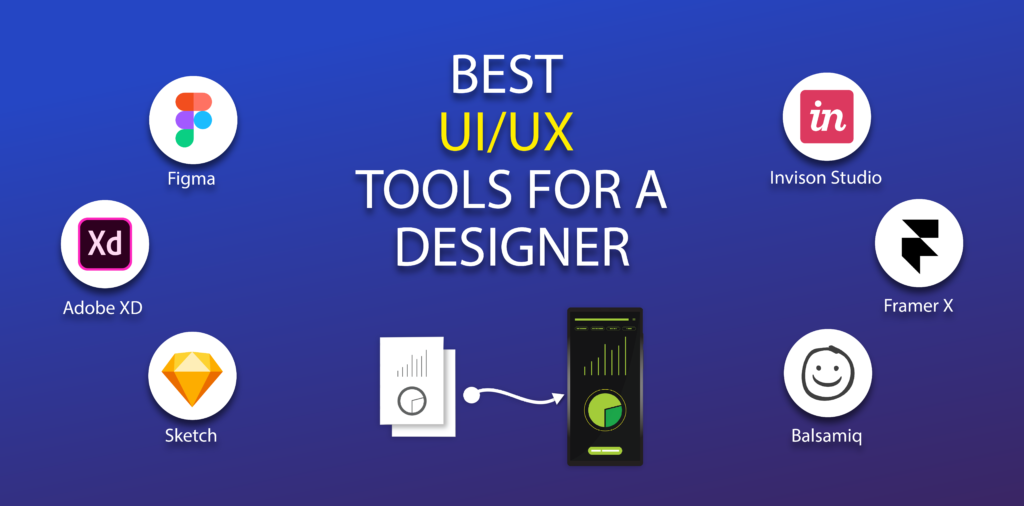UI and UX are two particular aspects of website design, yet; they work simultaneously.
UI design tools provide the designer what they need to design exactly like hi-fi wireframes, mockups, and models and render insignificantly viable products. They address the fundamentals of design, communicating its usefulness.
UX design tools focus on the client and how they’ll experience the content. These tools can help structure the data design, just as how somebody will move through the experience.
Here we present some UI and UX tools that you may discover helpful for your design process.

1. Sketch
Sketch App is the Godfather of all design tools. The vast majority of the prototyping tools function well with Sketch.
Having the option to roll out universal changes — through their library of symbols, layer styles, or text styles, or its smooth resizing and alignment features — saves designers time to deliver steady prototypes.
In UI design, repeating elements are exceptionally usual: buttons, bars, bubbles, and many more, and you can automatically copy these reusable elements using the sketch application.
2. Adobe XD
With Adobe XD, you can draw, reuse, and remix vector and create fine art to make wireframes, screen formats, interactive models, and creation-ready resources all in one application. We can switch effectively from design to prototype right inside the application; additionally, add interactions and transitions and share with colleagues and partners to test the look and feel of your design.
A product coming from adobe allows integration with software like Photoshop and After Effects which is a massive benefit for designers. The Designers can be more productive simply by importing files from their tools with any problem.
3. Figma
Figma is a fantastic tool. It took everything the best from Sketch and added numerous things that Sketch missed. The best thing about Figma is that it is browser-based, so everything is synchronized; if one colleague changes something, it is automatically shown in the entire task without publishing it. The other benefit of Figma is that CSS is now there, and you don’t need to use a third tool. Figma is continually improving; they recently added scrolling animation to its model.
Another advantage of Figma is it’s free for individual use, so you can look at it and get familiar with how it functions.
4. Invision Studio
Invision is the most popular prototyping tool on the planet. Its team member is continually adding new features to help designers model more productively. With Invision’s project management page, you can differentiate and arrange them into a work process. You can set segments for To-do, in progress, Needs survey, and Approved, and simplified your design features into the appropriate column. You could add interactions and animations to static pictures and transfer different document types, including JPG, PNG, GIF, AI, and PSD.
It has improved each part of the work process and coordinated effort among design and development. One can design better, quicker, and all the more cooperatively with real-time, and its in-browser design coordinated effort and presentation tools.
5. Balsamiq
It copies the speed and ease of making mockups on paper, yet on a digital medium. Designers can browse more than 500 pre-made symbols and things — or elements they draw themselves. The interactivity is essential, and low-fidelity models are more like an interactive, high-fidelity wireframe.
It creates genuinely extraordinary representations of the model for customers to see. A significant addition to generating new ideas is—using direct and quick keyboard shortcuts for clients to build efficiency and the speed of making mockups.
6. FramerX
Framer X has evolved from its initial days as a code prototyping application. Today, it offers many UI design tools for building valuable models and testing for ease of use. Its capacity to work with react is ideal for UI designers who like to stay on top of website design innovations.
Framer X also offers various plugins in their store and features, such as UI packs for integrating social media channels like Snapchat and Twitter, players for installing mixed media, frameworks, and other helpful segments that can effortlessly coordinate. It’s a unique interface design tool with a genuinely east expectation to learn and adapt.
Conclusion
These prototyping tools have their unique benefits, features and suit various requirements. Alongside the progressions and trends of website design, UI and UX should oblige these new practices and approaches.